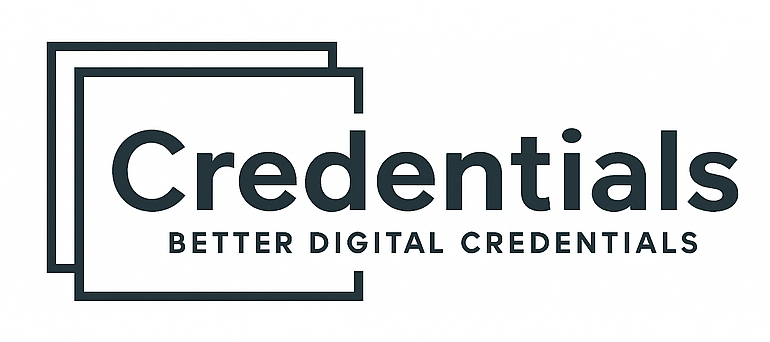The education sector is undergoing a profound digital transformation. Concepts like hybrid learning, micro-credentials, and lifelong learning are now part of everyday conversations at universities and companies. In this context, NFTs (Non-Fungible Tokens) have emerged as a surprising yet powerful tool.
While NFTs became widely known through digital art and cryptocurrencies, their application in education opens a fascinating debate: are they simply a short-lived trend, or do they represent the future of digital credentials?
The problem with traditional diplomas
For decades, paper diplomas have been the standard for certifying academic achievements. However, they present several limitations:
- Fraud and forgery: physical diplomas are relatively easy to falsify.
- Slow verification: employers must contact institutions, often facing a lengthy process.
- Loss or deterioration: paper credentials can be misplaced or damaged.
- Lack of interoperability: a diploma cannot easily integrate into digital or professional ecosystems.
PDF certificates offered some improvement, but they come with similar issues: they can be altered, falsified, or depend on centralized servers. This is why the sector is now seeking a more secure, scalable, and reliable model.
NFTs applied to education
NFTs are unique tokens on the blockchain that guarantee authenticity, ownership, and permanence. Applied to digital credentials, they mean that each certificate or micro-credential:
- Is unique and impossible to duplicate.
- Truly belongs to the student, not the issuing platform.
- Can be verified instantly anywhere in the world.
- Has an immutable record on the blockchain, ensuring long-term validity.
This provides a clear advantage over traditional models: trust no longer depends on an intermediary but on the decentralized blockchain infrastructure itself.
Trend or long-term future?
The media hype around NFTs created skepticism. However, educational use cases suggest a more lasting value:
- Governments and universities are already experimenting with blockchain-based diplomas.
- Companies are beginning to certify training and upskilling programs with NFTs.
- Students appreciate having real ownership and control over their credentials.
Rather than a fad, NFTs represent a paradigm shift in how we validate, share, and verify skills and achievements.
Key players in the market
The digital credential ecosystem is growing and includes several approaches:
- Credly: a pioneer in digital badges, widely adopted by universities and associations. Its model remains centralized and platform-dependent.
- Accredible: focused on digital certificates and micro-credentials, with strong LMS integrations. Its solution prioritizes portability but still relies on servers and closed environments.
- POK (Proof of Knowledge): bringing innovation by introducing NFTs into credential issuance. POK combines blockchain with global standards like Open Badges 3.0 and ELM, ensuring interoperability. It also provides institutions with custom white-label wallets so that students can store and manage their credentials independently.
Each platform has strengths, but the introduction of NFTs places innovators like POK in a unique position, complementing rather than replacing traditional models.
Applications of NFTs in education and companies
- Universities: issuing official diplomas as NFTs, ensuring authenticity and reducing verification costs.
- Micro-credentials: certifying short courses and specializations with blockchain credentials that can be instantly shared on professional networks.
- Corporate training: companies validating internal programs through NFT-based credentials, boosting trust and brand reputation.
- Professional events: organizations using NFTs to recognize participation in conferences and workshops.
Benefits of NFTs compared to other models
- Guaranteed authenticity: impossible to forge.
- Permanence: independent from private servers or companies.
- True student ownership: credentials belong to learners, not to platforms.
- Global accessibility: verifiable in seconds worldwide.
- Standardization: compatible with international frameworks, ensuring interoperability.
Current challenges and limitations
Despite their advantages, there are still obstacles to overcome:
- Adoption barriers: many institutions are not yet familiar with blockchain technology.
- Integration costs: some providers charge high fees for credential issuance.
- Public perception: NFTs are still associated with speculation, which creates resistance.
This highlights the importance of guiding universities and companies with education and real use cases, showing that NFTs in education are not about hype but about building lasting trust.
POK and innovation in NFT education
Within this evolving ecosystem, POK stands out as one of the platforms most committed to applying NFTs in education. Its model is characterized by:
- A system based on blockchain and NFTs, ensuring permanence and security.
- Compliance with major global standards, guaranteeing interoperability.
- White-label institutional wallets, giving students independent management of their credentials.
- Advanced analytics such as the Employability Index, which measures how credentials actually impact professional opportunities.
POK is not the only player in this field, but it is one of the platforms that is pushing NFT adoption most strongly as part of the future of education.
Conclusion
NFTs in education are not a passing trend—they represent a sustainable future for digital credentials. Although challenges remain in adoption and perception, their ability to guarantee authenticity, permanence, and ownership makes them a powerful tool for the years to come.
In this growing market, platforms like Credly and Accredible remain highly relevant, especially in centralized models that work well for certain contexts. At the same time, innovators like POK expand the possibilities by combining NFTs, blockchain, and interoperability standards, offering institutions and learners new ways to manage and showcase achievements.
Rather than replacing existing models, NFTs in education point toward a convergence: digital credentials that merge interoperability, accessibility, and blockchain-based trust, ensuring that academic and professional achievements remain verifiable and valuable throughout a person’s life.

